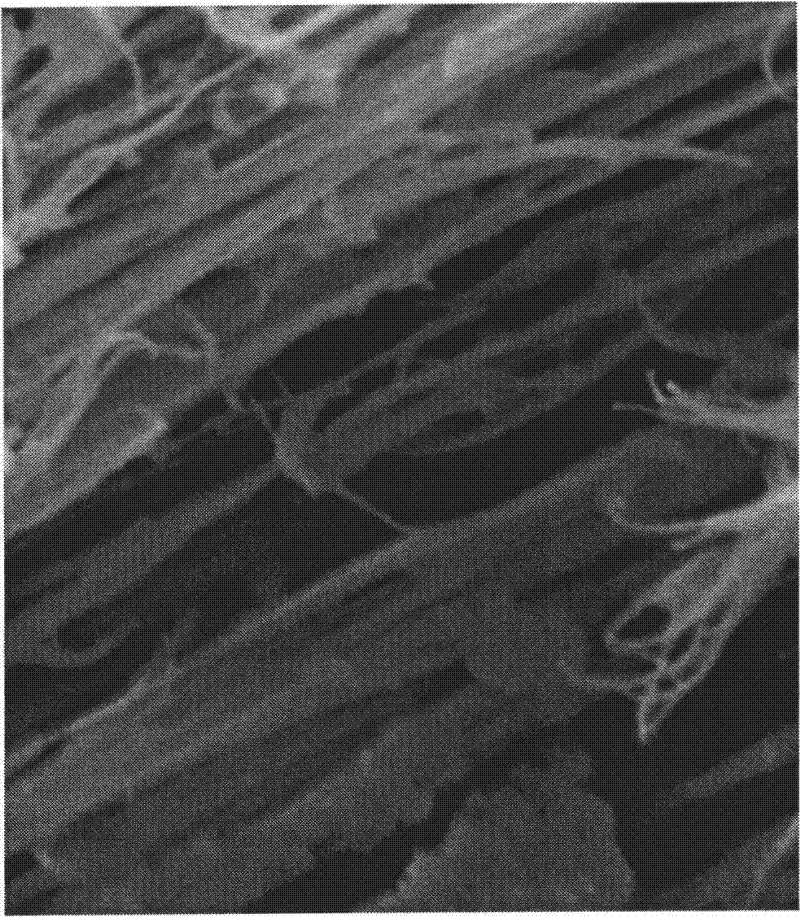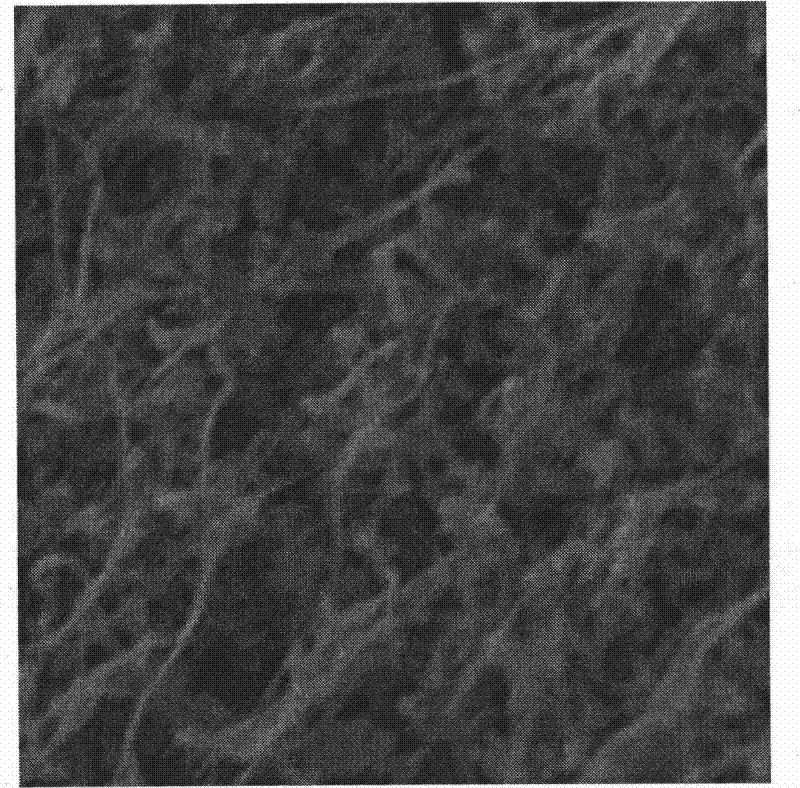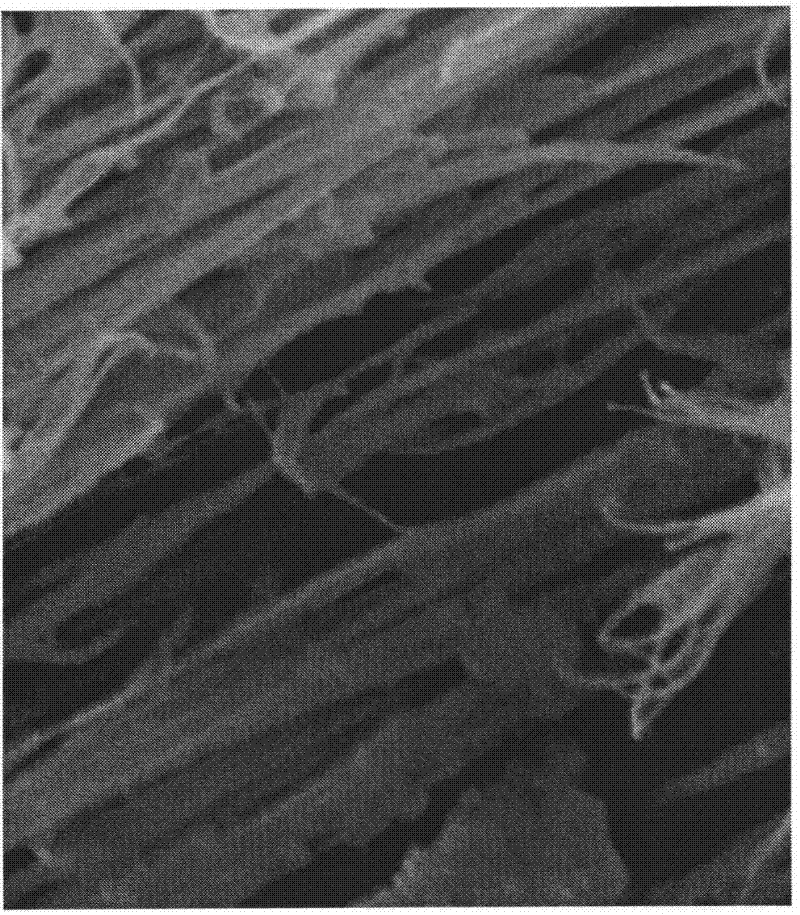Directional orifice carbide biological ceramic material and preparation method thereof
A bioceramic material and bioceramic technology, applied in the field of porous materials, can solve the problems of template structure differences, ceramic material structure differences, and the inability to clearly describe the relationship between material properties and structures, and achieve expanded application range, good affinity, The effect of improving uniformity
- Summary
- Abstract
- Description
- Claims
- Application Information
AI Technical Summary
Problems solved by technology
Method used
Image
Examples
Embodiment 1
[0026] First take by weighing phenolic resin, tetraethyl orthosilicate, p-toluenesulfonyl chloride and water respectively by phenolic resin: tetraethyl orthosilicate: p-toluenesulfonyl chloride: water=60%: 20%: 15%: 5% by weight, Stir in a water bath at 50°C to form a colloid; move the colloid to a commercially available plastic centrifuge tube with a conical bottom, fix the centrifuge tube on a device that can precisely control the lift, adjust the bottom of the centrifuge tube to be in contact with the surface of liquid nitrogen, and then Descend the centrifuge tube at a rate of 20 mm / h until the colloids in it are completely submerged in liquid nitrogen, then stop the descent and maintain this state for 3 hours; then place the centrifuge tube in a lyophilizer to freeze dry, freeze The drying time is 48 hours. The sample is taken out, placed in a tube furnace, fed with nitrogen and raised to 800°C at a rate of 2°C / min, kept at a constant temperature for 5 hours, and then lowe...
Embodiment 2
[0028] First weigh phenolic resin, tetraethyl orthosilicate, titanium orthosilicate respectively according to phenolic resin: ethyl orthosilicate: butyl titanate: polyoxymethylene: water=50%: 20%: 13%: 7%: 10% by weight Butyl acetate, polyoxymethylene and water were stirred in a water bath at 40°C to form a colloid; the colloid was transferred to a commercially available plastic centrifuge tube with a conical bottom, and the centrifuge tube was fixed on a device that could precisely control the lift, and the centrifuge was adjusted. The bottom of the tube is in contact with the surface of liquid nitrogen, and then the centrifuge tube is lowered at a rate of 30 mm / hour until the colloid in it is completely submerged in liquid nitrogen, then stops falling and remains in this state for 3 hours; then place the centrifuge tube in Freeze-dry in a freeze dryer for 72 hours, take out the sample, put it into a tube furnace, pass nitrogen gas and raise the temperature to 800°C at a rate ...
Embodiment 3
[0030] First weigh phenolic resin, butyl titanate, hexamethylenetetramine and water, stirred in a 50°C water bath to form a colloid; move the colloid to a conical plastic centrifuge tube at the bottom, fix the centrifuge tube on a device that can precisely control the lift, adjust the bottom of the centrifuge tube to contact the surface of liquid nitrogen, and then 20mm / hour descending rate, make the plastic centrifuge tube descend until the colloid in the centrifuge tube is completely submerged in liquid nitrogen, then stop descending and keep this state for 3 hours; then place the centrifuge tube in a lyophilizer to freeze-dry for 48 hour, take out the sample, put it into a tube furnace, feed nitrogen and raise the temperature to 800°C at a rate of 2°C / min, keep the temperature for 5 hours, and then lower it to room temperature; take out the sample, place it in a graphite heating furnace, and feed it with argon As a protective gas, raise the temperature to 1600°C at a heatin...
PUM
| Property | Measurement | Unit |
|---|---|---|
| pore size | aaaaa | aaaaa |
| pore size | aaaaa | aaaaa |
| porosity | aaaaa | aaaaa |
Abstract
Description
Claims
Application Information
 Login to View More
Login to View More - R&D
- Intellectual Property
- Life Sciences
- Materials
- Tech Scout
- Unparalleled Data Quality
- Higher Quality Content
- 60% Fewer Hallucinations
Browse by: Latest US Patents, China's latest patents, Technical Efficacy Thesaurus, Application Domain, Technology Topic, Popular Technical Reports.
© 2025 PatSnap. All rights reserved.Legal|Privacy policy|Modern Slavery Act Transparency Statement|Sitemap|About US| Contact US: help@patsnap.com



